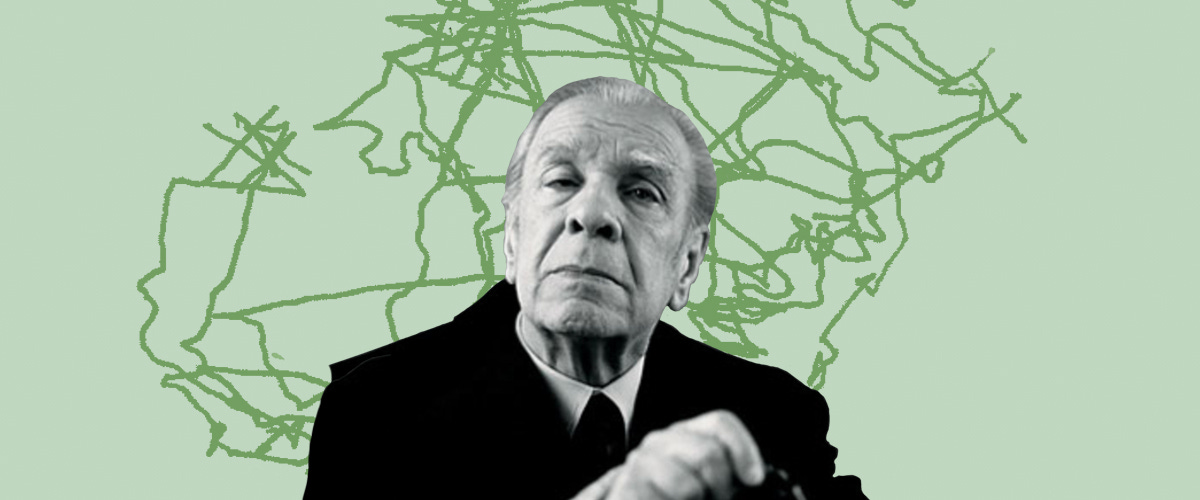On an indulgent visit to a used bookstore, I came across Alberto Manguel’s History of Reading, a mixed genre exploration of reading across the globe and covering 6000 years of history. He opens the book sharing his chance encounter with Jorges Luis Borges, for whom he served as a reader aloud when Borges went blind. Borges wrote a poem “On His Blindness,” following in the tradition of Milton, another blind poet. In the poem “Reading” dedicated to Borges, Amit Majmudar describes a “blind librarian with a lantern” holding his hand to show him how to navigate a world of books. The limitation of sight returned the reader to a communal practice of reading.
One of my most gifted students over my dozen years of teaching is blind, which has often led me to meditate on the difference between reading as an aural or visual experience. For centuries, reading was a communal activity because people primarily read aloud; they read as the copied manuscripts, as they taught dictation and memorization. Reading was more of an aural experience than a visual one. What can we learn from the past’s ways of reading that still might benefit us in an age where our technology has rendered aural experience mostly unnecessary?
Consider Christopher Smith’s book Reading for the Common Good, which advises us to slow down in our reading habits, dwell deeply with texts, and most significantly, converse with and about the books we read.
And, Sarah Mackenzie has taken great strides to return us to the practice of reading aloud through her Read Aloud Revival. If you do not listen to her podcast, please subscribe; I’m sharing here the conversation with Alan Jacobs, probably one’s go-to author when it comes to reading practices: A Theology of Reading, Pleasures of Reading in a Distracted Age, Breaking Bread with the Dead. (I joke that my purpose in life is to share Alan’s work.)
In your home, I hope you’re reading aloud regularly, reciting poetry at dinner, or to family and friends (my husband and I read comedy aloud most often, so we can enjoy laughing with one another). In the classroom, spend chunks of time reading the texts aloud to students. On campus, host reading marathons where you read all of Paradise Lost, Pride and Prejudice or Native Son aloud, students and faculty taking hour time slots throughout the day. The Whaling Museum in New Bedford, which I visited this past summer, hosts an annual reading of Moby Dick. You can see versions of these reading marathons across the country, proof that we literary weirdos continue to be a countercultural force.
When I was teaching Basil the Great’s “On Pagan Literature” in my Art of Reading seminar at the University of Dallas, we honed in on the saint’s description of reading as “gathering travel supplies for eternity.” What a phenomenal way of seeing the activity of reading! Basil writes one of the earliest apologies for why Christians should read Greek literature, such as Homer and Plato (I discovered a reader’s guide to this letter in Arts of Liberty vault of riches). We read to prepare our souls for the life-long pilgrimage.
If you would like to read in community but are not sure where to start, here are a handful of book lists to guide your journey:
John Senior’s 1000 Books for Life-Long Readers (If you’re not familiar with John Senior, he was one of the three professors who made up the legendary Kansas University Integrated Humanities program.)
In Majmudar’s poem, the unnamed guide attends to the wanderer in the library and navigates his way, so that he can discover the beauty of the treasures before him. They come alive when someone lights the way. Arts of Liberty hopes not only to be that guide for some of the greatest books in our tradition but also to empower teachers to continue passing on the light. We should not read in seclusion, but reading should be a communal activity. This newsletter hopes to invite readers into a community of reading and learning.



